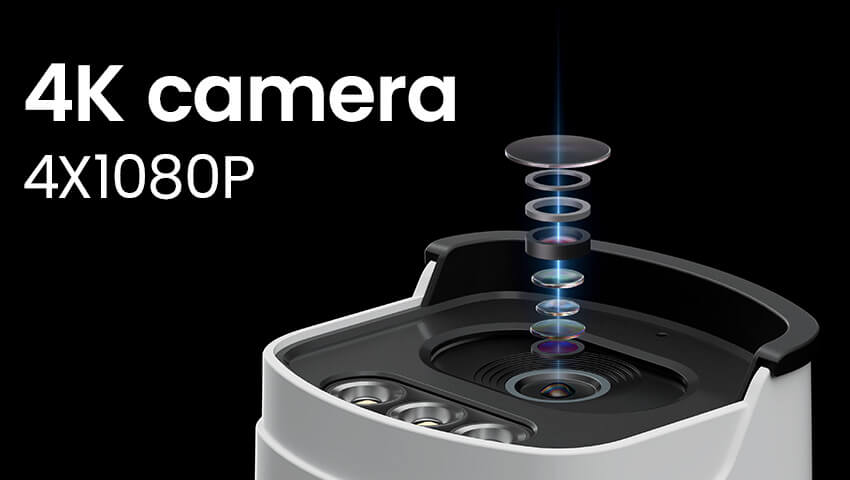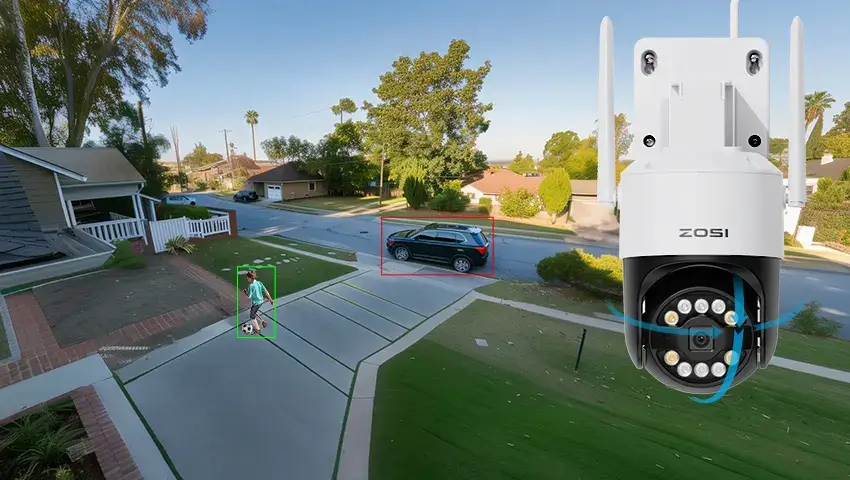Contents
Introduction
In the imaging and security industries, increased resolution often means a significant upgrade in experience. From the initial 720p and 1080p to today’s 4K cameras, image quality has entered a new stage of “ultra-high definition.” Whether for everyday home monitoring, commercial security, or filming, 4K cameras are gradually becoming the preferred choice. This article will provide a comprehensive understanding of the characteristics, application advantages, technical challenges, and future trends of 4K cameras.
I. Core Features of 4K Cameras
Ultra-High Resolution
4K cameras typically have a resolution of 3840 x 2160 pixels, four times that of traditional 1080p. They capture more detail and maintain clarity even when zoomed in.
Higher Image Quality
Thanks to higher pixel counts and HDR technology, 4K cameras deliver more realistic colors and a wider dynamic range, ensuring clear images in both bright and dark environments.
Wide Range of Applications
Security Monitoring: Homes, Shops, Factories, Parking Lots
Video and Film Shooting: Professional-Grade Clear Image Quality
Conferences and Education: Remote Video Renders More immersive
Live Streaming and Creative Production: Meeting High-Definition Broadcasting Needs
II. Advantages of 4K Cameras in the Security Field
Clearer Detail Capture
In surveillance scenarios, 4K cameras can clearly record details such as faces and license plates, facilitating evidence collection and security management.
Wider Surveillance Coverage
High-resolution images mean a single lens can cover more areas, reducing the number of cameras required and saving cabling and maintenance costs.
Upgraded Remote Monitoring Experience
Even when viewing remotely on a mobile phone or tablet, 4K images maintain high clarity, allowing you to monitor the situation anytime, anywhere.
III. Technical Challenges Facing 4K Cameras
Storage Pressure
4K video files are large, requiring high hard drive capacity.
Solution: Using H.265 encoding saves 50% of storage space compared to traditional H.264.
Bandwidth Requirements
High-definition images mean greater network transmission pressure.
Optimization Method: Choose a camera that supports Smart Stream, which intelligently adjusts the bitrate based on the dynamic image.
Hardware Requirements
NVR/DVR Decoding Capability: Requires 4K video playback support.
Display Device: Ordinary monitors cannot fully reproduce 4K resolution; a 4K display is recommended.
IV. 4K Camera Purchasing Guide
Choose Based on the Application Scenario
Home Users: Entrances, courtyards, living rooms → Wide viewing angle + night vision
Commercial Locations: Warehouses, cash registers, parking lots → High resolution + AI intelligent recognition
Key Parameters
Lens focal length and wide angle: Determine coverage.
Night Vision: Infrared or color night vision.
IP Rating: For outdoor use, IP66 or higher is recommended for waterproof and dustproof performance.
Price/Performance and Brand Selection
When choosing a camera, consider not only resolution but also compression technology, AI capabilities, and storage compatibility.
V. Future Development Trends
AI + 4K
More and more 4K cameras are incorporating AI, enabling intelligent recognition, behavior analysis, and vehicle classification.
Exploring 8K Cameras
Although 8K has already emerged in the imaging industry, its widespread adoption in the security sector requires higher bandwidth and storage support.
Combining Cloud Storage with Edge Computing
Uploading video data directly to the cloud and combining it with edge computing ensures security while reducing the burden on local storage.
Conclusion
4K cameras offer more than just improved image quality; they represent a fundamental shift in the security and imaging fields.
For home users, they provide greater peace of mind;
For businesses and commercial venues, they significantly enhance surveillance efficiency and security management capabilities.
With the advancement of AI and cloud technology, 4K will become the new standard, even ushering in a future of higher resolution and greater intelligence.





